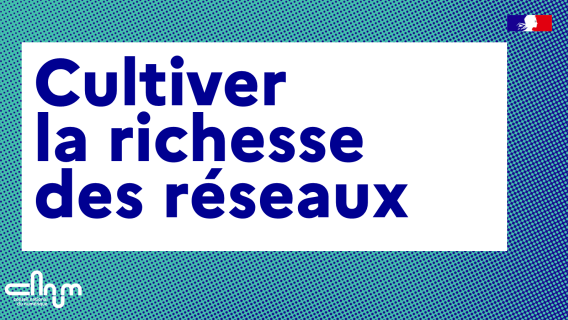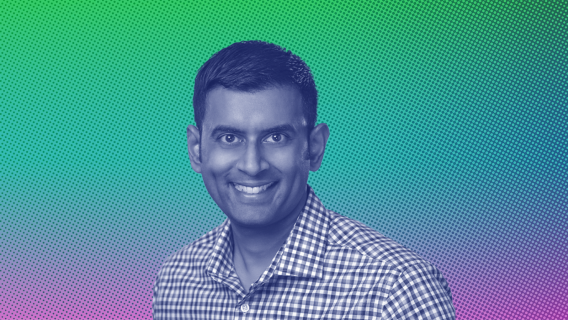To understand each technology, and to choose. Interview of Maryanne Wolf
Dr Maryanne Wolf is a US neuroscientist, director of the Center for Dyslexia, Diverse Learners, and Social Justice at UCLA, and author of books related to the "reading brain" and the impact of digital media on attention and capacities. In Proust and the Squid: The Story and Science of the Reading Brain (2007), she finds that paper and digital media stimulate our cognitive capacities differently, especially because digital media encourage a rapid, often shallow reading and not a deep reading. In her last book (Reader, Come Home: the reading brain in a digital world, 2018), she questions how to preserve cognitive skills associated with deep reading, such as critical analysis and empathy, through an education alternating the benefits of paper and digital media.
In the context of our work on the relationship between digital and knowledge, we wanted to know more about the impact of screen reading on human capacities, and discussed the articulation between digital media and paper, but also other forms of communication and knowledge sharing.
What are the mental processes and capacities associated with "deep reading"?
I will start with a few words about the reading brain, that brought me to the point where I became a reading worrier and a reading warrior for children and ultimately for society. In terms of evolution, we all have a set of genetic programs for our various life functions: for example, vision and language unfold in the child’s brain with only a little stimulation from the environment. Not so reading, because it’s an invention. Reading represents a new cognitive function that is only 6000 years old in our species. The reading brain can develop because a wonderful design principle allows us to connect existing genetically endowed capacities like vision and language in new ways. The young reading brain uses this capacity to pull together what it knows linguistically, cognitively, socially, and emotionally, and in the process gain new insights into the world.
« I became a reading worrier and a reading warrior for children and ultimately for society »
Reading is this extraordinary example of the brain’s design principle, being able to connect all these older genetically programmed parts in a new way. But it depends on what happens between 0 and 5, as precursor skills develop, or not! The ability to read depends both on how these skills develop in the young child, and how educators help children learn to connect these processes between 5 and 10, when we are learning to decode. Young readers have to become fast enough to integrate these processes together, so that we can bring more sophisticated processes to the reading circuit. As we become automatic, we begin to connect what we know (background knowledge) to the new content in what we read. Thus we learn to connect analogical thought, affective components, empathy, perspective-taking, and many inferential skills to the text. This new network in the deep reading brain is the basis for critical analysis and empathy. The penultimate act of reading is when we are critically analytic of the information we are processing; the ultimate act is to reflect upon what we read and generate our own insights. My first book was called Proust and the Squid: The Story and Science of the Reading Brain, because Proust understood the importance of deep reading when he said this: the heart of reading is our ability to go beyond the wisdom of the author to discover our own.
How digital media are transforming the “deep reading” practice and what are the consequences on our capacities?
The affordances of the medium, whether it’s print or digital, have different effects on how information is processed by the reading brain. Digital medium makes us able to absorb a lot of information, but in the process we become less able to slow down, to truly allocate attention to those deep reading processes. Adults have a fully developed reading brain, but are nevertheless challenged to handle the amount of information we are all daily bombarded with. Our default is to deploy only the most basic processes. The result is that when you have so much information you tend to skim over it, short circuiting the deep reading process.
« Everyone is bombarded with information, everyday we are reading more and more, but are we really reading it? »
My worry is that children don't learn from the start how to allocate their attention to deep reading processes, so they are not developing the same level of critical analytic and even empathy capacities. My work is to connect knowledge about what the brain does when it reads well and deeply and what it can fail to develop for children. We want all children to develop the necessary quality of attention that allows them to consolidate knowledge, to discern truth, to analyze the complexity of information. Everyone is bombarded with information, everyday we are reading more and more, but are we really reading it?
Our profit oriented culture distracts our attention during reading, with advertisement after advertisement. Some of the research shows that children and youth are distracted at least 27 times an hour when they are reading (Baron, 2021). A new study from UCLA (Rhinehart, L., Vazquez, S., & Greenfield, P., in press) assessed the performance of different college students divided between those who want to use laptops and those who want papers to take notes. Those who used their laptop were significantly less likely to perform well on the test than those who were laptop free. Indeed, they were taking their notes but also looked at their emails etc. so they perceived themselves as taking notes but in reality their attention was dispersed. In a research meta-analysis (Delgado, Vargas, Ackerman, Salmerón, 2018) with over 171,000 subjects, the authors looked at over 50 studies from 2000 to 2017 which investigated how students comprehended the same story in print versus screen. They found that the comprehension of text, particularly sequencing of the plot, was better on print. What about the digital natives? Although they perceived themselves better on the screen because they were faster, this was an illusion. The digital natives were even better with print than other subjects.
What are the political risks of such transformations, especially in the context of the "post-truth era"?
For citizens, there are very important implications if people are not critically analytic or empathic. Indeed, the evaluative processes within critical analysis are essential for a democracy: through these processes we become discerners of the truth in information, we learn how to generate hypotheses and make analogies between what we know and what we read. Whether we are discerning truth or not has great impact on how democracy functions. The loss or diminishment of critical analysis and empathy makes citizens more vulnerable to misinformation, fake news, and false promises by demagogues.
Unfortunately, more and more, people are using information only from one source to another that confirms what they think. Many citizens, bombarded with information, resort to reading only sources that are familiar and that confirm and reinforce their prior thinking. This “confirmatory bias” is further supported by being part of a group, and can lead to the acceptance of otherwise unsupportable viewpoints, particularly with regard to those deemed “others”. The polarization of society is exacerbated by this type of thinking, which often demonizes those who differ. The trend towards such narrowed thinking is the opposite of democracy, which is fueled by a multitude of views. From a cognitive perspective, this type of thinking is equally dangerous, as it means that some of our citizens are short-circuiting knowledge building, critical thinking, and wisdom. Thus, while access to information on the Internet is essential, we must have critical thinking, empathic citizens able to analyse and evaluate information in the broad context.
How to ensure human capacities “sustainability”, and through which medium(s)? What about the e-reader, digital medium not connected to the Internet?
The e-reader is between print and other digital mediums: it doesn’t have the same problems that the computer or smartphone have which is the presence of constant distraction. It makes efficient use of space for text and eliminates going constantly between different media sources. However, despite this positive set of features, it still has the issues of any screen device. Screens hasten our attention and are evanescent purveyors of content. A book provides the basis of better monitoring of our comprehension through both a psychological set to read more deliberately and through physical spatial information that we can use to monitor what we have read where.
I have developed a proposal for a “bi-literate brain”, especially for children who are learning and whose attention are distracted most of the time. How to develop deep reading on each media? And how do we decide what is the best media for a specific text? Each medium has its strengths and weaknesses: the objective is to figure out what is best for what purpose and for whom. For example, when I travel, I have my Kindle for quick novels and also hard copy for texts that require and reward thinking more deeply. The question for the 21st century reader is: what is the purpose of reading this particular piece of information? We have to understand what each technology is doing, and be able to choose.
More broadly, what is the articulation between digital and other forms of communication such as oral or writing?
It seems that the failures of deep reading associated with digital media affect weaknesses of writing as well. Regarding the last study that I mentioned, where students were reading only the beginning of the text, they also missed methodology, history, background so their writings were much like their reading. The writing was less informed and less able to take on the perspective of the reader. There is another influence which requires more attention: the density of text and the very complexity of sentences are both changing, as communications themselves change, whether on email or on Twitter. Many professors are noting changes in the writing capacities of their students. It is not about whether Hemingway or Proust has a better style of writing, it is about the next generation’s capacity to convey the best of their thoughts in the written form.
Beyond reading, we still have multiple ways to build empathy according to the oral tradition, with theater for instance. This is not about oral vs. written cultures; there is a place for multiple cultural forms of communication and various mediums. We want theater, films, but also books to read and cherish because they provide us greater exposure and immersion in the life, thoughts, and feelings of others.
To go further:
- Maryanne Wolf, Proust and the Squid: the Story and Science of the Reading Brain (2015)
- Maryanne Wolf, Reader, Come Home: the reading brain in a digital world (2018)
- Naomi Baron, How We Read Now: Strategic Choices for Print, Screen, and Audio (2021), Oxford University Press
- Rhinehart, L., Vazquez, S., & Greenfield, P. (in press). « The impact of screen-free zones in an undergraduate psychology classroom: assessing exam performance and instructor evaluations in two quasi-experiments. » Teaching of Psychology.
- Pablo Delgado, Cristina Vargas, Rakefet Ackerman, Ladislao Salmerón, « Don't throw away your printed books: A meta-analysis on the effects of reading media on reading comprehension » (2018), Educational Research Review





